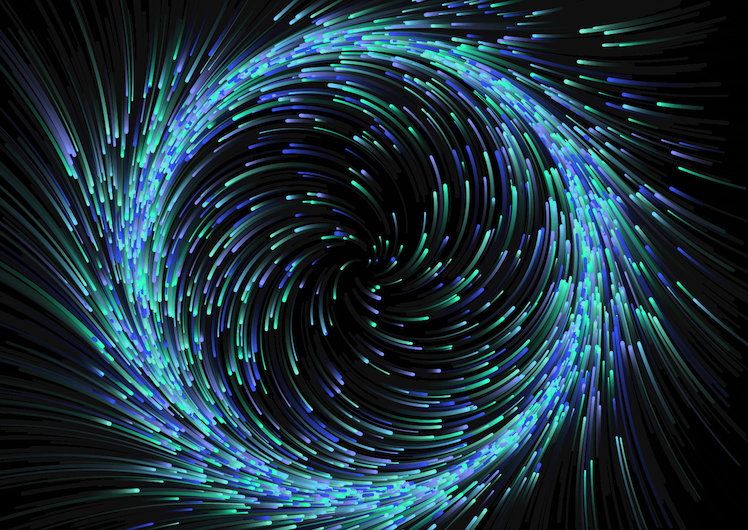Velocity fields
Interactive simulations
By Juan Carlos Ponce Campuzano, 17/June/2022
Consider the velocity vector field $\mathbf{v}$ of a steady-state fluid flow. The vector $\mathbf{v}(x, y)$ measures the instantaneous velocity of the fluid particles (molecules or atoms) as they pass through the point $(x, y)$. Steady-state means that the velocity at a point $(x, y)$ does not vary in time -even though the individual fluid particles are in motion. If a fluid particle moves along the curve $\mathbf{x}(t) = (x(t), y(t))$, then its velocity at time $t$ is the derivative \[ \mathbf{v}= \frac{d\mathbf{x}}{dt} \] of its position with respect to $t$. Thus, for a time-independent velocity vector field \[ \mathbf{v}(x, y) = ( v_1(x, y), v_2(x, y) ) \] the fluid particles will move in accordance with an autonomous, first order system of ordinary differential equations \[ \frac{dx}{dt}= v_1(x, y),\qquad \frac{dy}{dt}= v_2(x, y). \] According to the basic theory of systems of ordinary differential equations, an individual particle's motion $\mathbf{x}(t)$ will be uniquely determined solely by its initial position $\mathbf{x}(0) = \mathbf{x}_0$. In fluid mechanics, the trajectories of particles are known as the streamlines of the flow. The velocity vector $\mathbf{v}$ is everywhere tangent to the streamlines. When the flow is steady, the streamlines do not change in time. Individual fluid particles experience the same motion as they successively pass through a given point in the domain occupied by the fluid.
Examples
Some basic examples of velocity vector fields of steady-state fluids flow are the following:
- Near a wall (Stagnation point): $\mathbf{v}(x,y)=(k\,x,-k\,y)$, with $k\in \mathbb R^{+}$.
- Rigid body rotation: $\mathbf{v}(x,y)=(-k\,y,k\,x)$, where $k\in \mathbb R$ For $k>0$, rotation is anticlockwise, and for $k < 0$ rotation is clockwise.
- Vortex: $\mathbf{v}(x,y)=\left(\dfrac{-k\,y}{x^2+y^2},\dfrac{k\,x}{x^2+y^2}\right)$, with $k\in \mathbb R.$ For $k>0$, rotation is anticlockwise, and for $k < 0$ rotation is clockwise.
- Source & Sink: $\mathbf{v}(x,y)=\left(\dfrac{k\,x}{x^2+y^2},\dfrac{k\,y}{x^2+y^2}\right)$, with $k\in \mathbb R.$ For $k>0$, the flow is a source, and for $k < 0$ the flow is a sink.
Click on the image below to open interactive applet
Finally, if you find this content useful, please consider supporting my work using the links below.
∞ Thanks!
